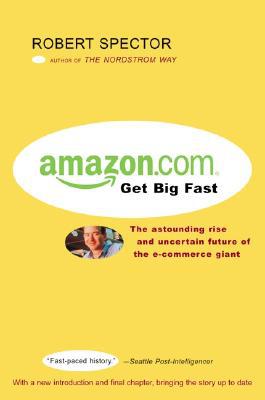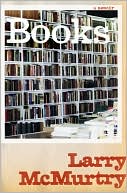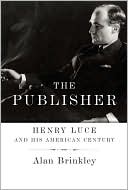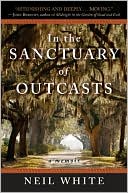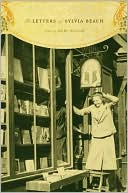Amazon.com: Get Big Fast
In Amazon.com Jeff Bezos built something the world had never seen. He created the most recognized brand name on the Internet, became for a time one of the richest men in the world, and was crowned "the king of cyber-commerce."\ Yet for all the media exposure, the inside story of Amazon.com has never really been told. In this revealing, unauthorized account, Robert Spector, journalist and best-selling author, gives us this up-to-date, fast-paced, behind-the-scenes story of the company's...
Search in google:
In Amazon.com Jeff Bezos built something the world had never seen. He created the most recognized brand name on the Internet, became for a time one of the richest men in the world, and was crowned "the king of cyber-commerce."Yet for all the media exposure, the inside story of Amazon.com has never really been told. In this revealing, unauthorized account, Robert Spector, journalist and best-selling author, gives us this up-to-date, fast-paced, behind-the-scenes story of the company's creation and rise, its tumultuous present, and its uncertain future. Publishers Weekly Amazon.com founder and CEO Jeff Bezos declined to be interviewed for this book, relates Spector, a journalist who has written for USA Today and UPI. But Bezos had nothing to fear. Spector has taken an extremely benign look at the so-called e-commerce success story, beginning with Bezos's career as an investment banker, passing through Amazon.com's early days in a dingy warehouse, the search for investor dollars, the company's transformation from a virtual to a physical entity, skirmishes in the marketplaces and the courts and, finally, the improbable expansion into other products (besides books) and countries. Sometimes chronological, sometimes topical, this comprehensive overview is filled with interesting trivia (e.g., the company initially protected itself against credit card theft by walking a floppy disk from one PC to another instead of transmitting information over the Net). Unfortunately, Spector writes with a glibness that leaves the reader wondering exactly what he means: "Setting about to run a corporate culture from the ground up, Bezos focused on hiring the absolute best people he could find." In other cases, he starts down a promising road but never brings us to the end; for example, he writes that "in reality, in the quest to get big fast, the seemingly mild-mannered Bezos is a fierce, take-no-prisoners competitor," and proceeds to fuzzily document how Amazon gets closer to the consumer. Those looking for a quick primer on the growth of one of the world's most famous dot-coms will find this useful. Readers looking for a journalistically penetrating account, readers will be better served by the business press. (Apr) Copyright 2000 Cahners Business Information.\|
Amazon.com\ Get Big Fast \ Chapter One\ \ \ Who is Jeffrey Bezos?\ \ \ Presently the younger generation will come knocking at my door.\ -- Henrik Ibsen, The Master Builder\ \ \ Operation Pedro Pan ("Peter Pan") was one of the most massive political rescue missions of young people in history. Masterminded and organized by Father Bryan O. Walsh of the Catholic Welfare Bureau in Miami, Florida, this dramatic humanitarian effort began the day after Christmas 1960 and ran until October 1962, when the United States and the USSR were facing off over Soviet-supplied ballistic-missile installations in Cuba. On October 22, when President John F. Kennedy announced a naval blockade of Cuba to prevent the delivery of more missiles, Cuban president Fidel Castro responded by terminating all flights from Havana to Miami. By the time Operation Pedro Pan was brought to a halt, more than 14,000 boys and girls, ages 6 to 17, had landed on U.S. shores. Once the unaccompanied children arrived, they were placed into foster care through the Cuban Children's Program, another humanitarian project created by Fr. Walsh and financed by influential south Florida businessmen.\ One of the oldest of the group was 17-year-old Miguel Bezos, whom everyone called Mike. Bezos (pronounced BAY-zoes'Spanish for "kisses") quickly mastered English and was able to graduate from high school in Delaware, where he shared quarters in a Catholic mission with 15 other refugees. Diploma in hand, he headed west to New Mexico, where he enrolled at the University ofAlbuquerque. In 1963 he took a job in a local bank, where he met another employee, 17-year-old Jacklyn "Jackie" Gise Jorgensen, a newly married, attractive native of Cotulla, Texas. Although the two young people came from dramatically different backgrounds, both of their fates were influenced in some way by America's cold war battles with the Soviet Union and the worldwide communist threat. For Mike, it was the escape from Cuba; for Jackie, it was part of her father's job. Lawrence Preston Gise (whom everyone called Preston) had just been appointed by the Congress of the United States to be manager of the Atomic Energy Commission's (AEC) western region. Operating out of headquarters in Albuquerque, he supervised the region's 26,000 employees at the Sandia, Los Alamos, and Lawrence Livermore laboratories.\ Before joining the AEC, Gise (rhymes with "dice"), who hailed from Valley Wells, Texas, had worked on space technology and missile defense systems for the Defense Advanced Research Projects Agency (DARPA), the research and development arm of the Department of Defense that was created in 1958 as the first response by the U.S. government to the Soviet launching of the Sputnik I satellite in 1957. Intended to be a creative counterbalance to conventional military thinking in research and development, DARPA was formed, according to its official mission statement, "to assure that the United Statesmaintains a lead in applying state-of-the-art technology for military capabilities and to prevent technological surprise from her adversaries." In 1970, DARPA's engineers created a model for a powerful communications network for the U.S. military that could still function even if a nuclear attack demolished conventional lines of communication. The system, dubbed ARPAnet, was the foundation of what would eventually become the Internet. (But we're getting ahead of the story. More about ARPAnet later.)\ When Mike and Jackie met, she was already pregnant, and on January 12, 1964, she gave birth to a boy, named Jeffrey Preston, who Mike would later legally adopt after he and Jackie married in 1968. Five years after Jeff's birth, his half sister Christina, was born, and the following year, half brother Mark completed the family. Jeff has said that he has no memory of his biological father. "But the reality, as far as I'm concerned, is that my dad [Mike Bezos] is my natural father," he has said. "The only time I ever think about it, genuinely, is when a doctor asks me to fill out a form." He added, "It's a fine truth to have out there. I'm not embarrassed by it." In fact, Bezos has claimed that when he turned 10 years old and his parents informed him that he was adopted, he wasn't particularly concerned. On the other hand, when his parents broke the news that he needed to wear glasses, "That," he recalled, "made me cry."\ After earning his college degree, Mike Bezos went to work at Exxon as a petroleum engineer, a job that eventually took him, Jackie, and Jeff to Houston, Texas'the first of many moves in the life of the Bezos family.\ In Houston, Jeff showed his precociousness early. At age three, he and his mother were embroiled in a battle of wills over his sleeping accommodations'he wanted a real bed; she thought he hadn't outgrown his crib. One day, Jackie walked into Jeff's bedroom and saw him trying to fashion himself a bed by tearing apart the crib with a screwdriver; she knew that she had met her match. At his Montessori school, he would become so absorbed in whatever task he was doing that teachers could get him to move on to the next activity only by lifting him up while he was still in his chair, carrying him across the room, and planting him at the next work spot.\ To satisfy Jeff's intellect and curiosity, Jackie often brought home little electronic gadgets from Radio Shack. While attending Houston's River Oaks Elementary School, he became devoted to playing with an Infinity Cube, a device with motorized mirrors that allowed the user to stare into "infinity." But when Jeff wanted an Infinity Cube of his own, Jackie balked at the $20 price tag. Undaunted, Jeff purchased separately all the necessary pieces (which were cheaper than the toy itself) and built his own Infinity Cube because, he said at the time, "You have to be able to think...for yourself." This story was included in...\ Amazon.com\ Get Big Fast. Copyright © by Robert Spector. Reprinted by permission of HarperCollins Publishers, Inc. All rights reserved. Available now wherever books are sold.
AcknowledgmentsPrefaceIntroductionCh. 1Who Is Jeffrey Bezos?1Ch. 2I'll Take Manhattan12Ch. 3Seattle33Ch. 4Garage In, Garage Out47Ch. 5Out to Launch64Ch. 6Get Big Fast84Ch. 7Raise the Bar105Ch. 8"Anal-Retentive" About Customer Service126Ch. 9Toast of the Town ... or Amazon.toast?158Ch. 10Poster Child for Internet Commerce179Ch. 11Get Bigger Faster207Notes237Index247
\ Publishers Weekly - Publisher's Weekly\ Amazon.com founder and CEO Jeff Bezos declined to be interviewed for this book, relates Spector, a journalist who has written for USA Today and UPI. But Bezos had nothing to fear. Spector has taken an extremely benign look at the so-called e-commerce success story, beginning with Bezos's career as an investment banker, passing through Amazon.com's early days in a dingy warehouse, the search for investor dollars, the company's transformation from a virtual to a physical entity, skirmishes in the marketplaces and the courts and, finally, the improbable expansion into other products (besides books) and countries. Sometimes chronological, sometimes topical, this comprehensive overview is filled with interesting trivia (e.g., the company initially protected itself against credit card theft by walking a floppy disk from one PC to another instead of transmitting information over the Net). Unfortunately, Spector writes with a glibness that leaves the reader wondering exactly what he means: "Setting about to run a corporate culture from the ground up, Bezos focused on hiring the absolute best people he could find." In other cases, he starts down a promising road but never brings us to the end; for example, he writes that "in reality, in the quest to get big fast, the seemingly mild-mannered Bezos is a fierce, take-no-prisoners competitor," and proceeds to fuzzily document how Amazon gets closer to the consumer. Those looking for a quick primer on the growth of one of the world's most famous dot-coms will find this useful. Readers looking for a journalistically penetrating account, readers will be better served by the business press. (Apr) Copyright 2000 Cahners Business Information.\|\ \
